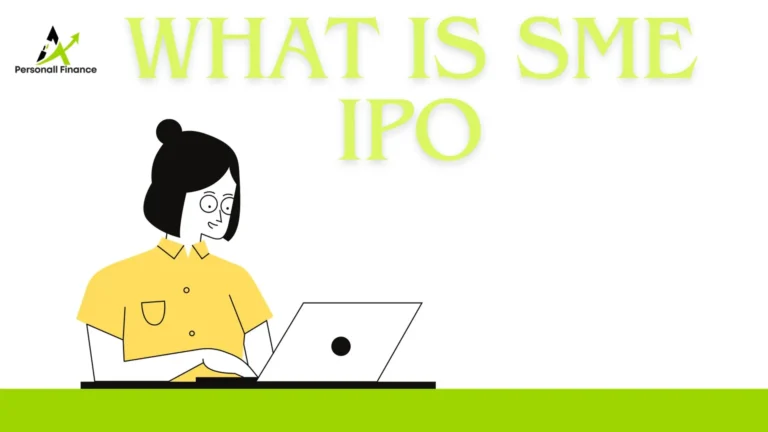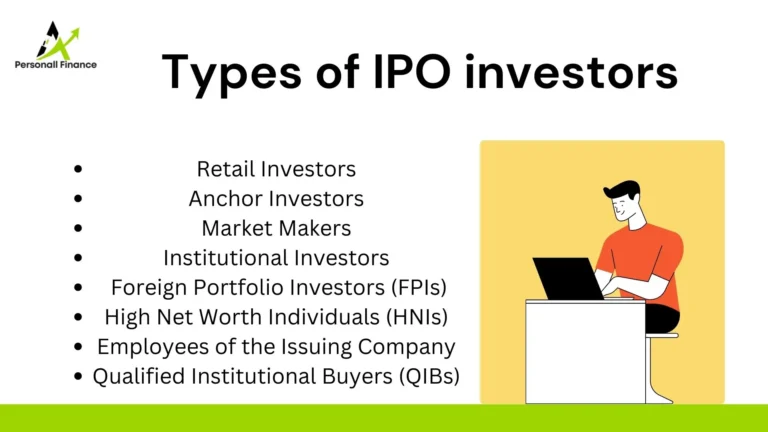Introduction
Welcome to our blog, where we demystify the world of SME IPO. Looking for what is SME IPO and keen to know How To Apply For SME IPO? Look no further. In this comprehensive guide, we’ll navigate through the intricacies of SME IPOs, providing clear explanations and a step-by-step approach to the application process.
Whether you’re a novice investor or an experienced entrepreneur, understanding SME IPOs is crucial in today’s dynamic financial landscape. Join us as we decode the details, helping you to grab opportunities and make informed decisions in the world of SME IPOs.

Table of Contents
ToggleWhat is SME IPO
An SME IPO, or Small and Medium-sized Enterprises Initial Public Offering, is a process through which small and medium-sized companies in India can raise funds from the public by issuing shares on a stock exchange.
These IPOs are designed to meet the needs of smaller businesses, making it simpler for them to enter the capital market.
SME IPOs offer growth opportunities, increased visibility, and access to a wider investor base. They are subject to specific regulations and eligibility criteria set by SEBI (Securities and Exchange Board of India) to protect investors’ interests while promoting entrepreneurship and economic development among smaller enterprises in India.
How To Apply For SME IPO
- Step 1: Get a Demat Account: You must first have a Demat account. It’s like a digital wallet for the shares you’ll get from an IPO. If you don’t have one yet, you’ll need to open it up.
- Step 2: Keep an Eye on IPO News: Stay tuned for news about IPOs. You can check websites or watch financial news on TV. They’ll tell you when .
- Step 3: Apply for SME IPO: When the IPO you’re interested in opens up, it’s time to apply for it. You can do this online. Just fill in some information about how many shares you want and how much you’re willing to pay for them.
- Step 4: Place Your Bid and Pay Up: Decide how much you want to pay for the shares. You can choose to bid at the cut-off price, which means the system will decide the final price for you. Or, you can bid at a specific price within the given range. Make sure you’ve got enough money in your bank account linked to your Demat account to cover the cost.
Characteristics of SME IPO
An organization seeking to introduce an Initial Public Offering (IPO) on a SME platform within an exchange must make an official announcement before its stocks become eligible for listing and trading.
SME-IPOs have gained huge popularity as a means for companies to secure funds from a diverse pool of investors and gain listing status. Investors in SME-IPOs have historically enjoyed high returns on their investments.
Advantages of SME IPO
1. Capital Infusion: One of the most important benefits of SME IPOs is the infusion of capital into small and medium-sized enterprises (SMEs). By going public, these companies can raise significant funding from the market.
This capital can be used for various purposes, including business expansion, research and development, debt reduction, or working capital needs. It provides SMEs with the financial resources required to fuel growth and grab new opportunities.
2. Enhanced Visibility and Credibility: Going public through a SME IPO significantly improves a company’s visibility and credibility in the market. Being listed on a recognized stock exchange adds authority and trustworthiness to the business.
This increased visibility can attract more customers, partners, and potential investors, contributing to the company’s growth.
3. Liquidity for Founders and Early Investors: For founders and early-stage investors in SMEs, an IPO provides an opportunity to monetize their investments.
They can sell part of their shares to the public, allowing them to realize the value they have built over time. This liquidity can be put back in other ventures or used for personal financial goals.
4. Employee Incentives: Publicly traded companies often use stock-based incentive programs, such as Employee Stock Option Plans (ESOPs), to attract and retain talent.
SMEs going public can leverage these programs to motivate and reward their employees, aligning their interests with the company’s long-term success.
5. Ability to Raise Debt at Competitive Rates: After a successful SME IPO, the company’s improved financial position and credibility can lead to simple access to debt financing at reasonable rates.
This can be beneficial for financing further expansion or for specific projects.
Disadvantages of SME IPO
1. Regulatory Compliance Burden: One of the significant disadvantages of IPOs is the strict regulatory compliance required. Companies must adhere to a multitude of rules and regulations set up by the regulatory authorities, such as SEBI (Securities and Exchange Board of India) and the stock exchanges.
This compliance entails substantial paperwork, disclosure requirements, and ongoing reporting duty, which can be time-consuming and costly.
2. High Costs: The process of going public through an IPO involves substantial expenses. These costs include legal fees, underwriting fees, registrar fees, listing fees, and other associated expenses.
For small and medium-sized enterprises, these costs can be a significant financial burden.
3. Market Volatility: Once a company goes public, its stock is subject to market forces and investor sentiment. SME IPO stocks can experience significant price volatility, which may not align with the company’s actual financial performance.
This volatility can impact the company’s stock price and the value of shareholders’ investments.
4. Dilution of Ownership: When a company offers shares to the public through an IPO, it typically results in the dilution of ownership for existing shareholders, including the founders and early investors.
This means that their percentage of ownership in the company decreases as new shareholders acquire shares.
5. Disclosure of Sensitive Information: To comply with regulatory requirements, businesses must disclose a substantial amount of sensitive information about their financials, operations, and strategies.
This information becomes public and can be accessed by competitors, customers, and the general public. This may pose a risk to the company’s competitive advantage.
Conclusion:
In short, understanding how to apply for a SME IPO and what it involves is important for both investors and entrepreneurs. SME IPOs provide a way for small and medium-sized businesses to raise funds from the public, while giving investors an opportunity to support and potentially profit from these ventures.
By following the steps outlined and grasping the concept, individuals can make informed decisions in this field, unlocking new opportunities for growth and investment.
Frequently asked question
An SME IPO (Small and Medium-sized Enterprises Initial Public Offering) is a fundraising process through which small and medium-sized companies can offer their shares to the public and get listed on a stock exchange. It allows these companies to raise capital for company growth and provides an exit route for existing investors.
Yes you can sell SME IPO on listing day
- Open a Demat Account: Start by getting a Demat account if you don’t have one. It’s where your IPO shares will be stored digitally.
- Stay Informed About IPO: Keep an eye on IPO news through websites, TV, or other sources. This will tell you when IPOs are happening and their details.
- Apply Online: Once you find an IPO you’re interested in, apply for it online. Fill in the required details like the number of shares you want and the price you’re willing to pay.
- Bid and Pay: Decide on your bidding price and ensure you have enough money in your bank account to cover it.
You can sell SME IPO shares by calling your broker or using a DEMAT/TRADING account.



